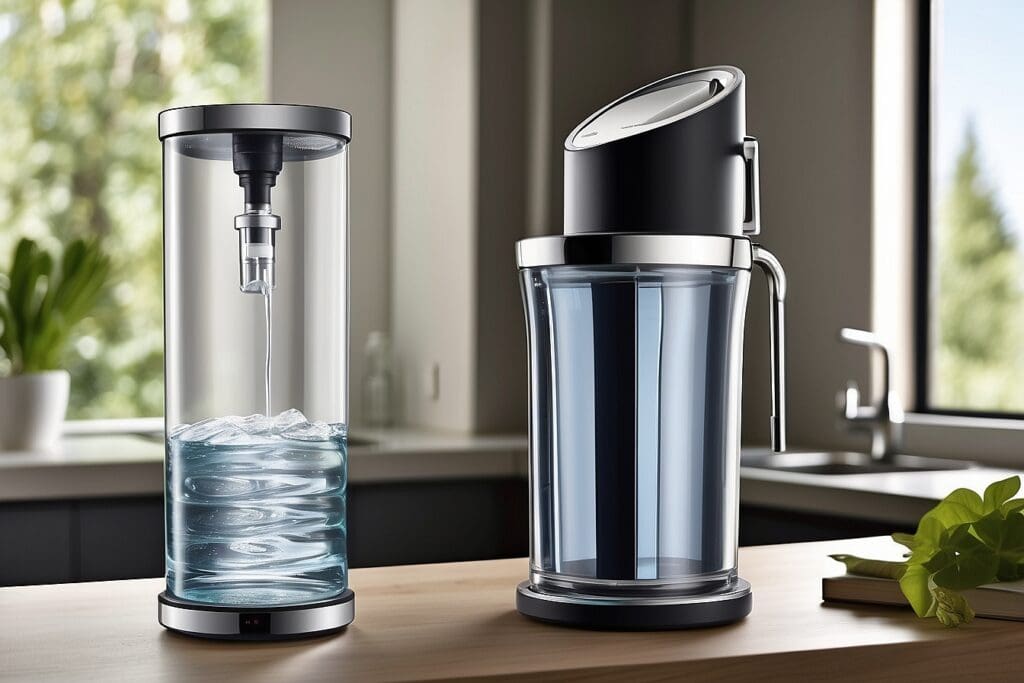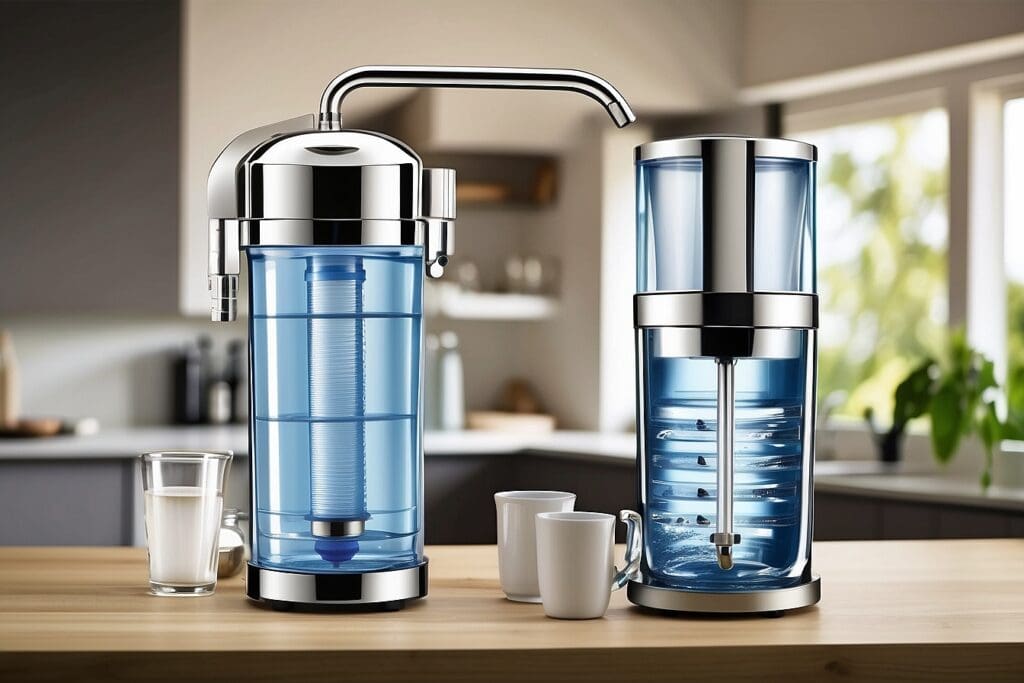Options for Water Filtration at Home! Water is essential to human life, and millions of people end up drinking contaminated water everyday. In the United States, many households have access to clean drinking water, yet even safe drinking water can carry contaminates like pesticides, fertilizers, heavy metals, and chlorine. Because these contaminates can be hazardous to human health, many households across the country use a water filtration option. Filtration can be achieved with a whole house system or simply with a pitcher. The option of using bottled water does exist, but because of its environmental burden and inconsistency of its water source, this option should be the last resort. Below are some of the options available as water filtration options for your home:1
Granulated, Activated Carbon Water Filters
This is the kind of filter most often found in the jug-type portable filters that are widely available at kitchenware stores. This is the most basic form of filtration but is certainly worth having if your budget can’t reach any further. The filters don’t last as long as the other types, creating more disposable waste and additional cost. These filters will remove chlorine, some chemicals, mercury, large parasites and particulates.
- Advantages: Low initial cost, no installation required.
- Disadvantages: Short filter life, won’t remove bacteria, asbestos, most radioactive compounds, some heavy metals and fluoride.
Carbon Block, Activated Carbon Water Filters
This type of filter it is usually plumbed into the home water supply on just one tap, usually in the kitchen. Carbon block filters are more expensive than granulated types but offer greater filtration and usually require replacement less often. This type of filter will remove everything the granulated type will plus a greater range of chemicals including solvents and pesticides as well as some radioactive contaminants.
- Advantages: Relatively cheap, filters last longer than granulated and offer greater filtration.
- Disadvantages: Requires plumbing, doesn’t remove bacteria, heavy metals, some radioactive contaminants, asbestos or fluoride.
Ceramic Carbon Water Filters

As the name suggests this type of filter is comprised of two parts, ceramic and carbon. This gives it the ability to filter out a wide range of contaminants. These filters usually come as a cartridge that sits under the sink in the kitchen and is plumbed into the water supply and the filtered water is then sent to a countertop tap. A ceramic carbon filter will remove a large amount of contaminants including most bacteria and parasites, cysts, chlorine, some radioactive contaminants, most solvents, pesticides and chemicals, as well as some heavy metals. These filters offer very good value for money with filters typically lasting 12 months or even longer in an average household.
- Advantages: Relatively low cost, good filter life, effectively removes a large amount of contaminants.
- Disadvantages: Some plumbing required, doesn’t remove fluoride, some heavy metals, viruses and very small microbes.
Distillers
Distillers heat water to the boiling point, and then collect water vapor as it condenses, killing disease causing microbes and leaving most chemical contaminates behind. Contaminates that easily turn into gases, such as gasoline components or radon, may remain in the water unless the system is specifically designed to remove them.
- Advantages: Removes most bacteria and other microbes with low initial cost.
- Disadvantages: May not remove all pollutants and the water may taste flat because its natural minerals and oxygen have been removed.
Reverse Osmosis Water Filters
Reverse osmosis systems are generally considered to be the most effective form of water filtration available. The main part of the system is a semi-permeable membrane through which the untreated water passes. Due to the pressure at which the water is under, it flows in the opposite direction to that which it would in natural osmosis, hence the name “REVERSE” osmosis. By passing through the membrane, almost everything is removed from the water except radon, pesticides, and volatile organic chemicals (VOCs). To address this, most reverse osmosis systems come with an additional carbon/ceramic filter that removes these contaminants either prior to passing through the membrane, after passing through, and sometimes both before and after. Because reverse osmosis systems are more sophisticated than other types of filters, often incorporating the other types into their design, they are significantly more expensive. However, the running costs are roughly the same as for the solid carbon/ceramic filters. Reverse osmosis systems are available either fitted to a single tap, as with other filter types, or plumbed into the main water inlet pipe, delivering filtered water throughout the house.
- Advantages: Highly effective filtration, running costs reasonable, whole house systems available.
- Disadvantages: Expensive initial cost, plumbing work required. Filtration is so comprehensive that ALL minerals are removed, meaning supplements may be required to replace minerals with nutritional value.
Combination Systems
Another option that has become more widely available in recent years is a combination filter system. These are often marketed as an alternative to reverse osmosis systems and consist of multiple methods of filtration in combination. Typically they may have 2, 3 or even 4 different filters. As an example, the water may first be passed through a carbon block filter and then through a silver impregnated ceramic filter. The idea being that each step in the process removes different contaminants or simply catches what may have slipped through previous stages. If the price is right, this kind of system may be a worthwhile alternative to reverse osmosis.
- Advantages: Filtration can be comparable to reverse osmosis.
- Disadvantages: High initial cost. Expensive and time consuming to replace multiple filter cartridges.
Here’s to drinking clean, healthy water in your home every day—no plastic bottle required!





